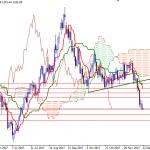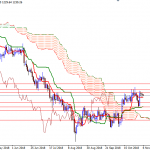Slow productivity growth is part of the subpar growth rates the United States has shown in recent years. But measurement problems are fooling us: People are better off than the statistics indicate.
The economy is not about amassing money or gold, Adam Smith taught us. But neither is it really about gross domestic product. It’s about providing value to people, based on their own desires and preferences. That value is rising, though we do not—and cannot—measure it well.
Our national economic productivity—output per hour worked—is growing at a slow pace. The average since World War II has been two percent per year, but lately, we’re barely over one percent. That may sound like a small difference, but it compounds year by year, eventually becoming substantial.

Dr. Bill Conerly based on data from Bureau of Economic Analysis
Growth rate of output per hour measured from peak of economic cycle to following peak.
However, we’re missing something important, something that is boosting our well-being tremendously—but we cannot measure. We can find it by going back to basics.
The demand for a product reflects what each of us would be willing to pay for it. We imagine asking everyone the question, “What is the maximum you would be willing to pay for this particular product or service?” Let’s use encyclopedias as an example.
Some wealthy families with high aspirations for their children would be willing to pay thousands of dollars to have an encyclopedia in their home. Back in 1985, about 100,000 families a year paid $1,249 for the Encyclopedia Britannica. Some of them would have paid more, if they had to. Others were right on the edge of paying the asking price and would have dropped out at a higher price. Others were nowhere close to paying that much, but would have paid $500 or $100.

(Photo by Niall Carson/PA Images via Getty Images)
For calculation of gross domestic product, government statisticians look at the market value of actual sales. That is, they multiply the average price by the number of units sold. So the 100,000 sets sold, times the price paid of $1,249, equals $124.9 million. That was part of Gross Domestic Product.














Leave A Comment